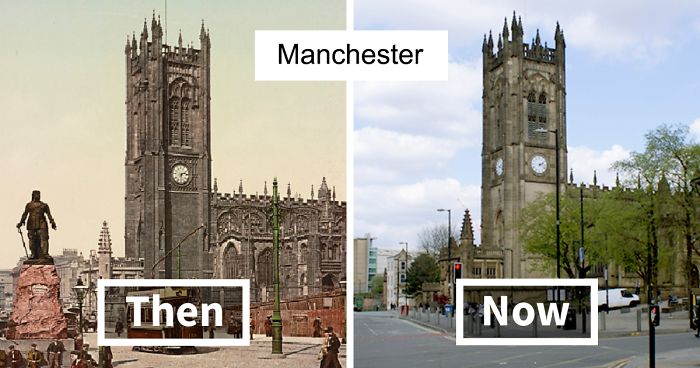
7 Side-By-Side Pics Of The Same Exact Locations In England Show What 125 Years Do To A City
If you were given one travel ticket to any time and place in the past, where would you go? And whilst we can’t say we’ve invented the time-traveling machine, this is as close as we can get if your choice was Victorian England.
The world is rapidly evolving and the only visual reminder about the past is captured in the archive images. On Stride took it even further and juxtaposed old photos of seven famous landmarks in England from the end of the 19th century and modern times. The side by side comparison of photos taken in the same exact place shows how these cities have transformed in the past 125 years from architecture to lifestyle and even fashion trends. Some graceful historical sites have stood the test of time and still serve as a testimony of majestic architecture while the ‘modern’ touch is prominent in each photo.
Buckle up for the time travel through London, Liverpool, Manchester, Bristol, Newcastle, Scarborough, and Worthing. What version of the same place do you prefer?
More info: onstride.co.uk
Bristol – St. Augustine Parade
Image credits: onstride
Saint Stephen’s church remains a constant on Bristol’s skyline – in fact, it’s been there since the year 1470! For several centuries the church tower was an urban space landmark that seafarers could use to guide themselves to Bristol Harbour. Today, it’s tucked behind taller developments such as Colston Tower (to the left of the modern image). But the most significant detail to have changed from photo to photo has been there even longer: the River Frome has disappeared from sight since this part of it was covered over in 1938, one of the latest developments in a long history of diverting and culverting the river to boost trade around the harbor.
Liverpool – St. George’s Hall
Image credits: onstride
The area between Lime Street railway station and St. George’s Hall opposite (on the left of the picture) is a rare example of a barely-changed landscape in this part of the city. The area of Lime Street around the corner from the gothic buildings has been radically transformed by urban planning in the last few years, while if you were to turn 180 degrees and walk into the shopping district, you’d find it barely recognizable compared to a decade ago – before the redevelopment of ‘Liverpool One’. Talking of 180-degree turns, the Neoclassical pomp of St George’s remains exactly where it stood when it opened in 1854 despite a persistent urban myth that it was accidentally built back-to-front.
London – Victoria Embankment
Image credits: onstride
There’s a surprisingly ancient piece of history in these photos: the obelisk in center-frame is the 3,500-year old ‘Cleopatra’s Needle’ offered by Egypt to Britain as a gift in the 19th century AD. It remains sadly overlooked in 2019 as officials resist pressure to celebrate the 200 year anniversary of the gesture. Waterloo Bridge beyond is a far newer landmark but with a more eventful history: the version in the Victorian photo was demolished in the 1930s, and rebuilt by a team of women during the Blitz (it took a while for their story to emerge due to statements like then-Deputy Prime Minister Herbert Morrison’s: “the men that built Waterloo Bridge are fortunate men.”) It was the only Thames River bridge to incur damage from German bombs. More recently, it was the site of the major global warming protests of the Extinction Rebellion.
Manchester – Victoria Street
Image credits: onstride
The cobblestones of Victoria Street may have long since vanished to make way for the motor car, but the controversial statue of Oliver Cromwell that disappears from one photo to the next could be making a comeback. The statue was a gift to the city from Elizabeth Heywood, wife of 19th-century mayor Abel Heywood, in honor of her late husband Thomas Goadsby, the city’s previous mayor. But it was Cromwell’s political divisiveness as much as the serial mayor-marrying of Elizabeth Heywood that resulted in it being put on the street instead of its original destination inside Manchester Town Hall. Cromwell was relocated to Wythenshawe Hall in the 1980s but seems set to return to city life when the area around the 15th-century gothic cathedral (right) is redeveloped and rebranded as the ‘Medieval Quarter’ in the near future.
Newcastle – Black Gate and Castle
Image credits: onstride
The ‘Black Gate’ drawbridge post built in 1250, and Henry II’s 842-year-old castle (built on the site of the fortress that gave Newcastle its name) are listed buildings, so they haven’t changed much between Victorian times and now. The most significant change is the building that’s popped up between them in the photo – and this one’s now listed, too. Built in the classical style as the Northumberland County Hall in 1910 and expanded upwards and outwards in 1933, it is now a hotel. The bridge has become a railway viaduct for the East Coast mainline to Scotland.
Scarborough – the Spa at South Bay
Image credits: onstride
The city of Scarborough can trace its fortunes to the 17th-century discovery of a mineral spring with purportedly medicinal properties. Word spread and the spa became a fashionable tourist destination, and over the next two centuries a sequence of structures of varying impressiveness (beginning with a simple wooden terrace) overlooked the waters. With the arrival of a rail connection, the spa complex (left) was built, and then restored and expanded after a fire in the 1880s. The key difference between the pictures is the enclosure of the Sun Court in the later image. Although the Grand Hall seats 2,000, the Sun Court is an altogether more wholesome place to catch a performance by the Scarborough Spa Orchestra, who have performed there since 1912.
Worthing – Marine Parade
Image credits: onstride
The pier at Worthing was first opened in 1862, with the South Pavilion in the background of the original photo added in 1889. The pavilion survived a gale that washed away much of the pier in 1914, but disappeared behind the bigger and more modern Pier Pavilion built at the shore end in 1926, which dominates today’s photo. In the 1930s, the South Pavilion perished in a fire and passers-by hurried to dismantle the pier to stop the flames spreading to the new pavilion. The South Pavilion was subsequently rebuilt in the Streamline Moderne style – kind of art deco-meets-nautical. It later became a nightclub, before returning to use as a café and entertainment venue, while the pavilion in the modern picture is mostly in use as a theatre.
106Kviews
Share on FacebookSmog killed a lot of trees in the Victorian period. The build up of soot from coal fires on the leaves. But yeah, that really surprised me as well!
Load More Replies...SOOO bizzare to see my town on here! Worthing used to be so beautiful... still is tbf.
Nice. I was surprised to see that the cities seem to be greener with more trees now than then.
Thanks for Posting. I always enjoy the Then and Now type of photo's, it shows how time waits for no one.
Wow they kept so much the same. I like how they kept a lot of the structures. I want to see NYC done because it would look totally different in the photos.
I walked that exact spot in Bristol this morning and get absolutely drenched.
London embankment has changed, not for the better, money comes first
The only thing I noticed was the number of trees, we have more trees now that so nice.
I see some things rebuild, added & here & there some urban planning execution due to changing times (vehicles instead of horses, increased nrs of people etc etc). @AUTHOR: I think people "may have a very different definition on actual transformation".
Smog killed a lot of trees in the Victorian period. The build up of soot from coal fires on the leaves. But yeah, that really surprised me as well!
Load More Replies...SOOO bizzare to see my town on here! Worthing used to be so beautiful... still is tbf.
Nice. I was surprised to see that the cities seem to be greener with more trees now than then.
Thanks for Posting. I always enjoy the Then and Now type of photo's, it shows how time waits for no one.
Wow they kept so much the same. I like how they kept a lot of the structures. I want to see NYC done because it would look totally different in the photos.
I walked that exact spot in Bristol this morning and get absolutely drenched.
London embankment has changed, not for the better, money comes first
The only thing I noticed was the number of trees, we have more trees now that so nice.
I see some things rebuild, added & here & there some urban planning execution due to changing times (vehicles instead of horses, increased nrs of people etc etc). @AUTHOR: I think people "may have a very different definition on actual transformation".
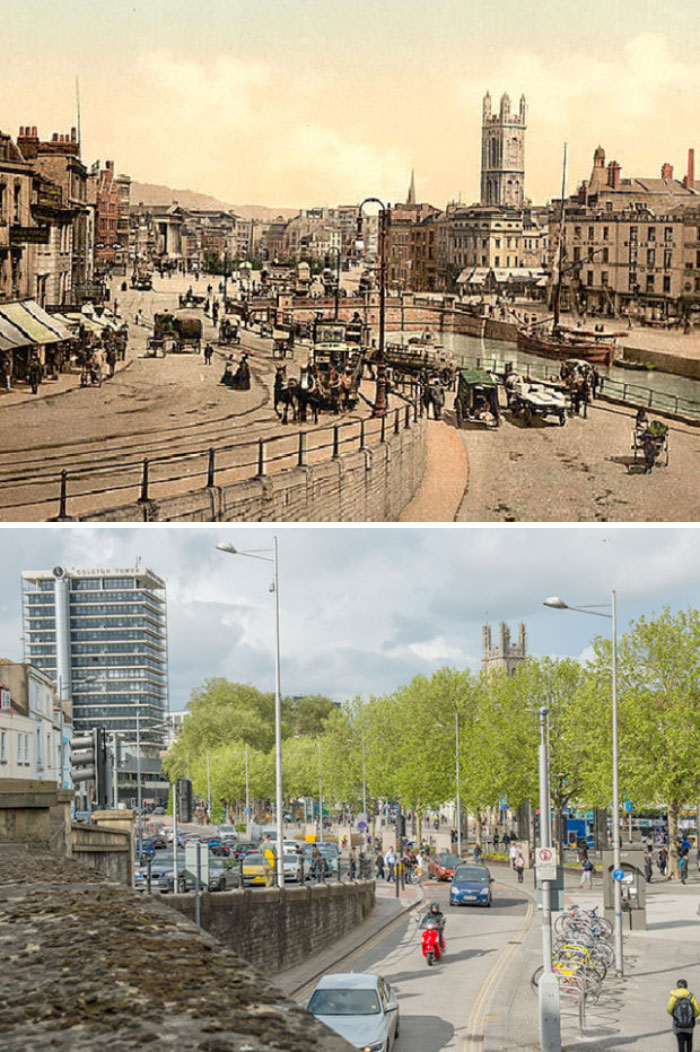
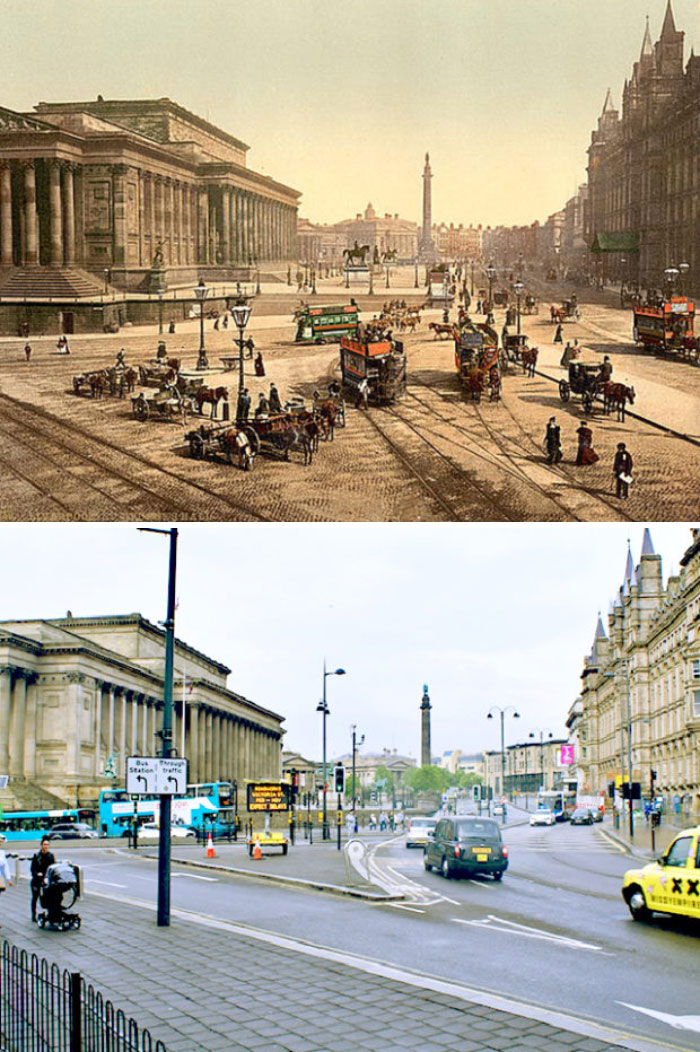
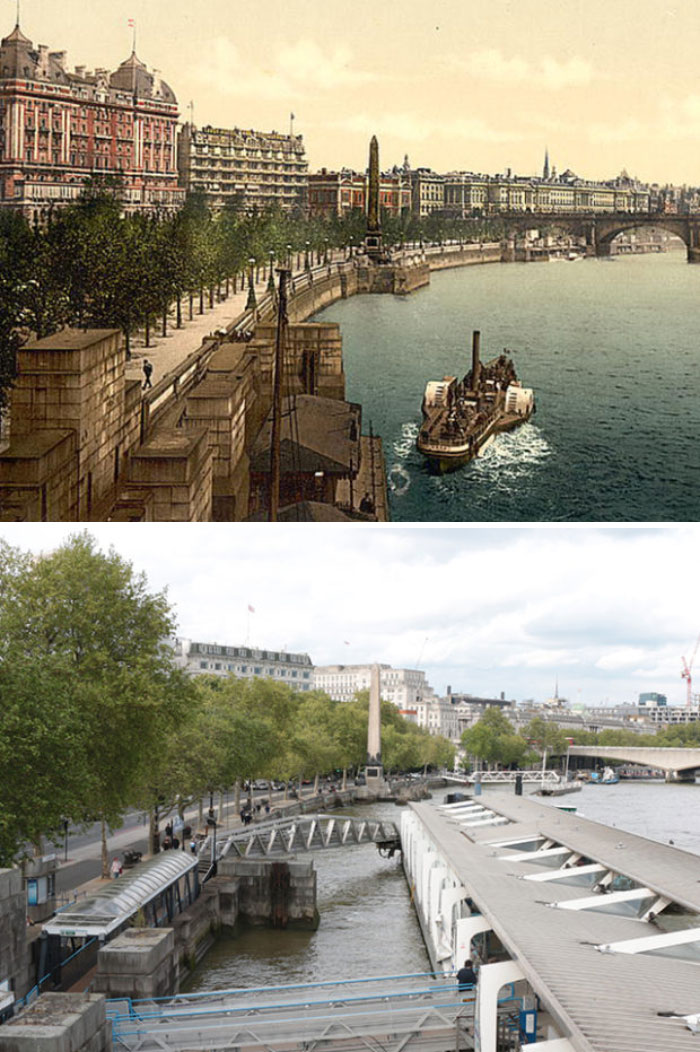
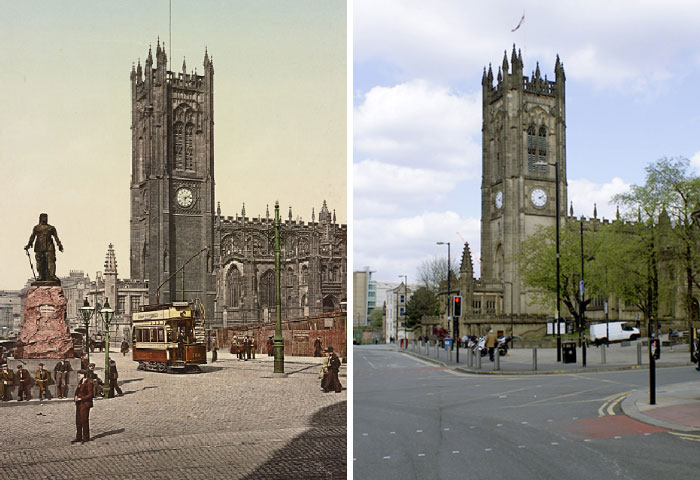
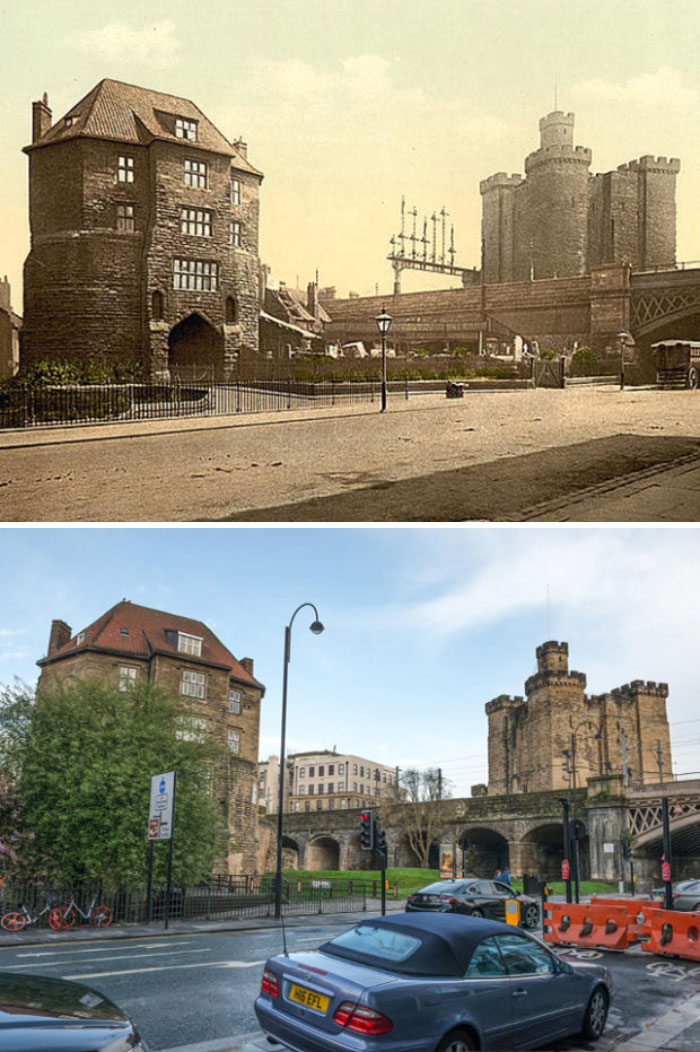
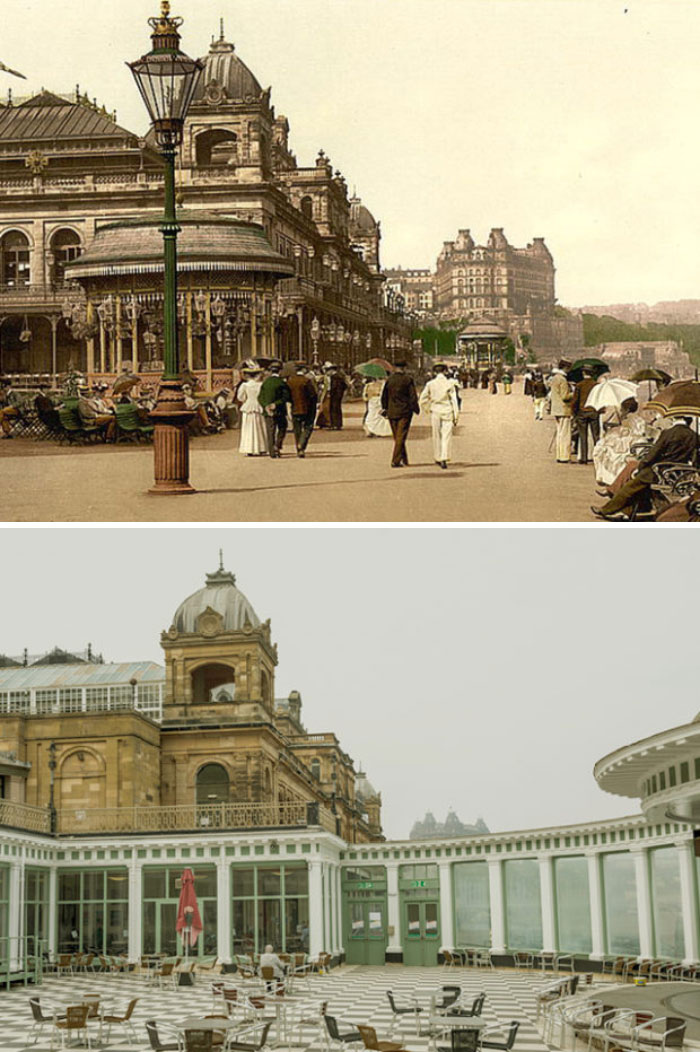
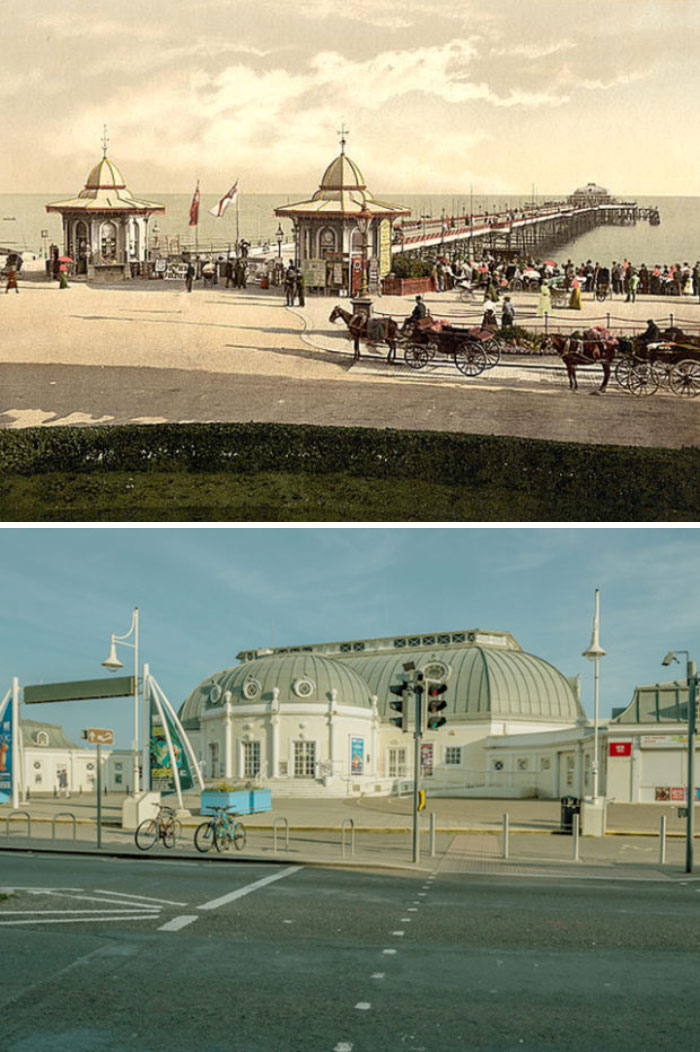



289
31